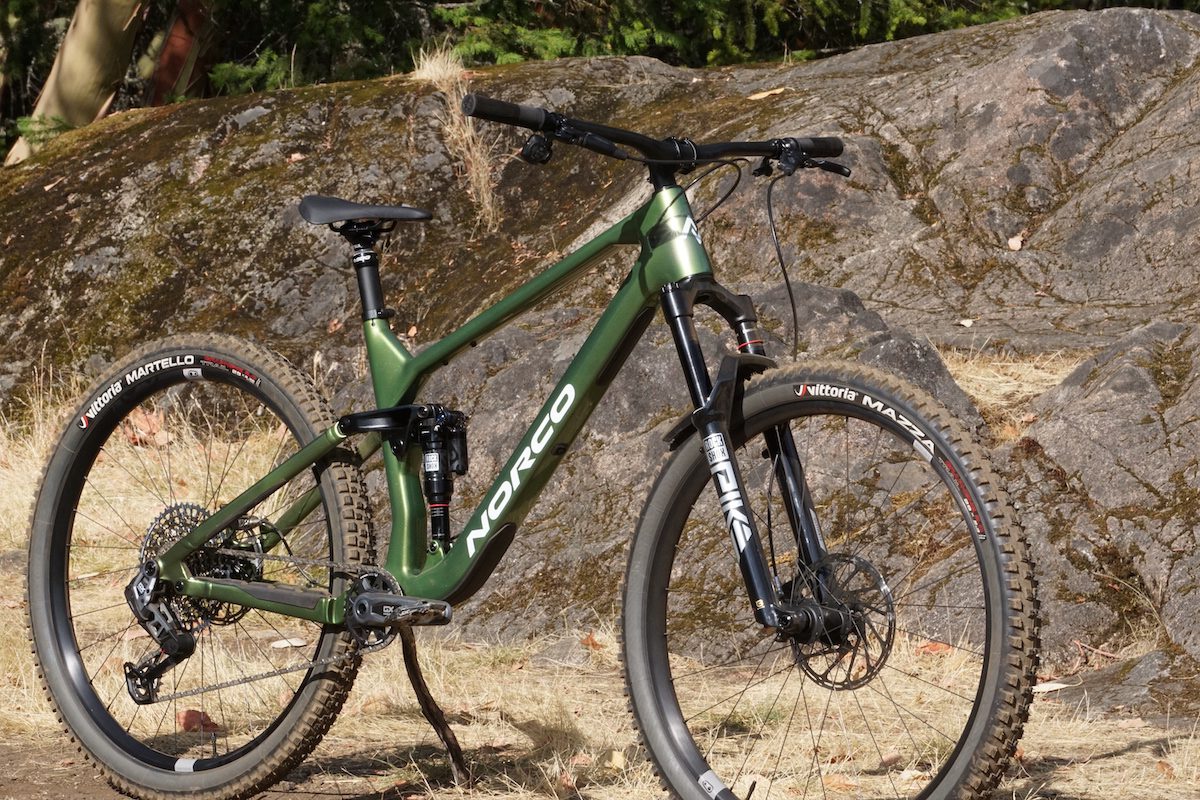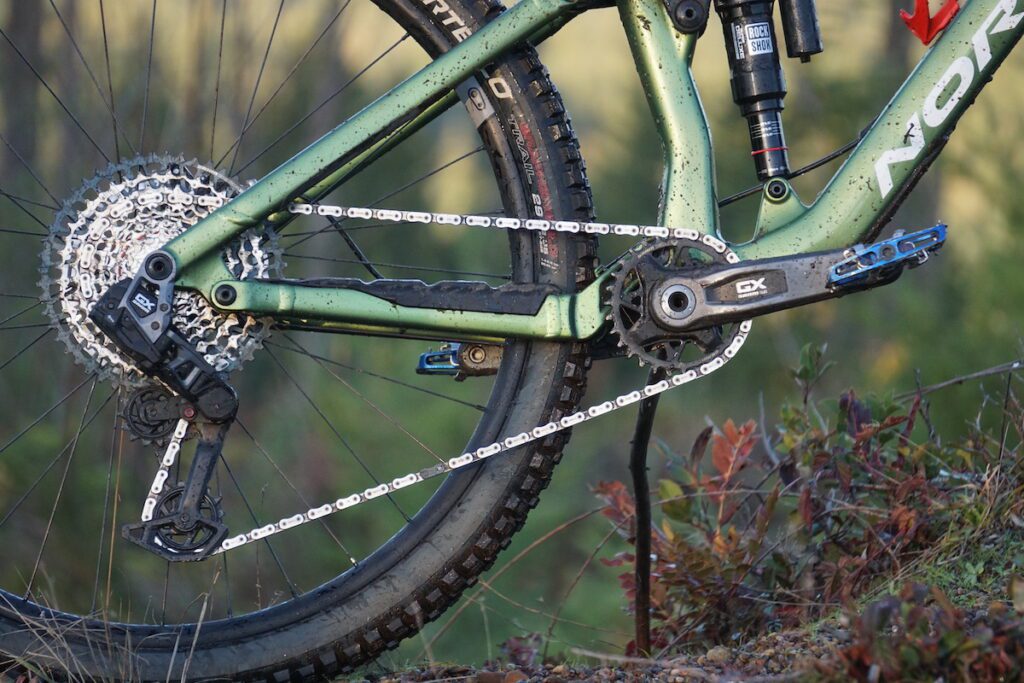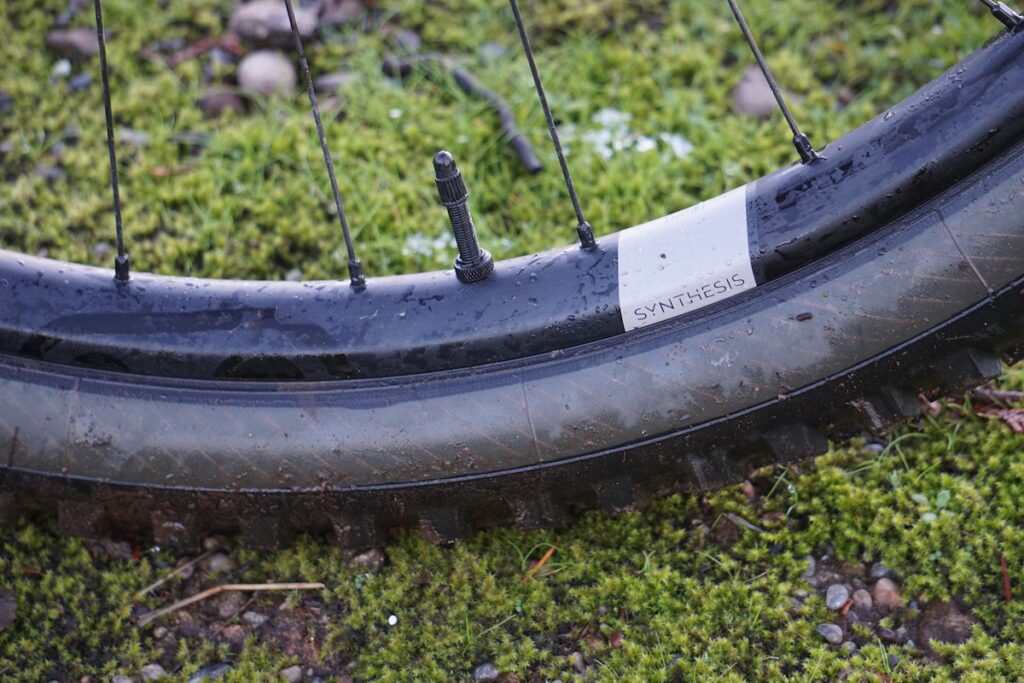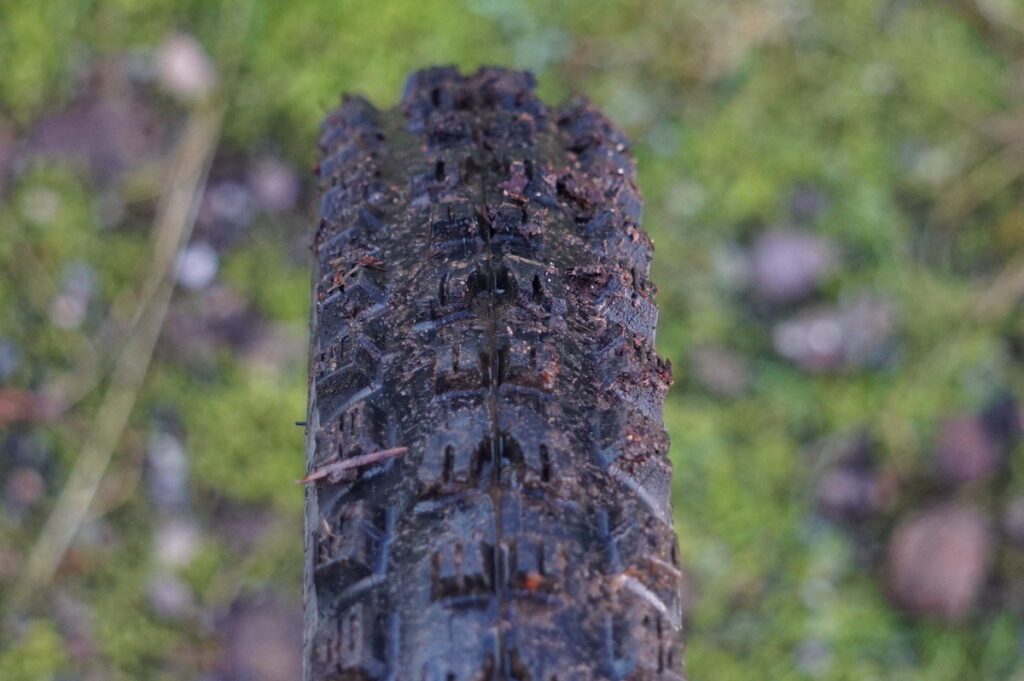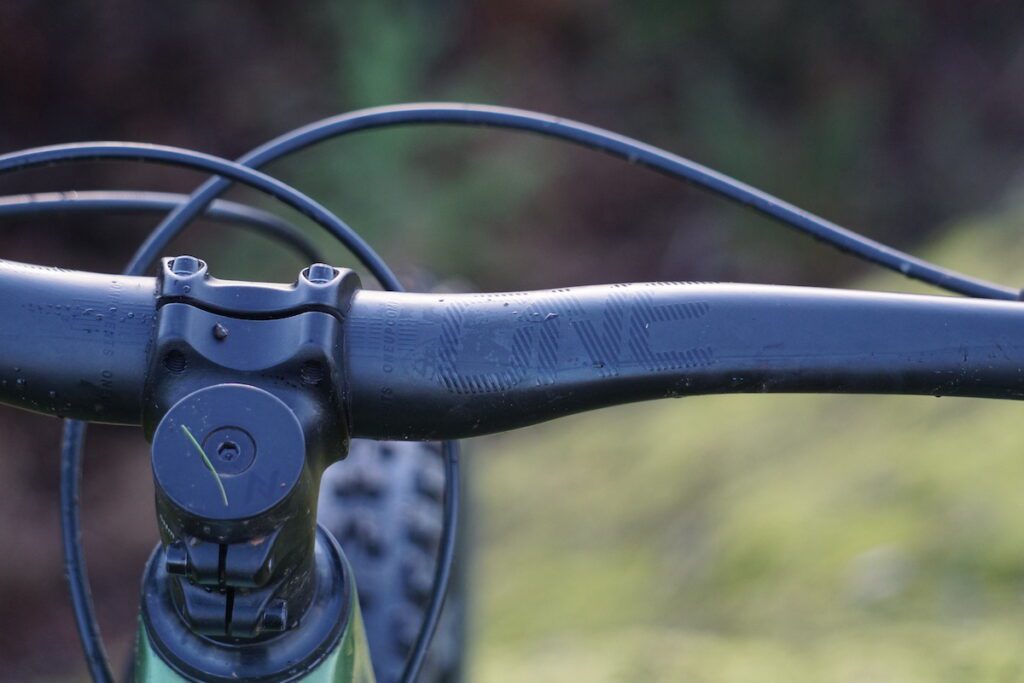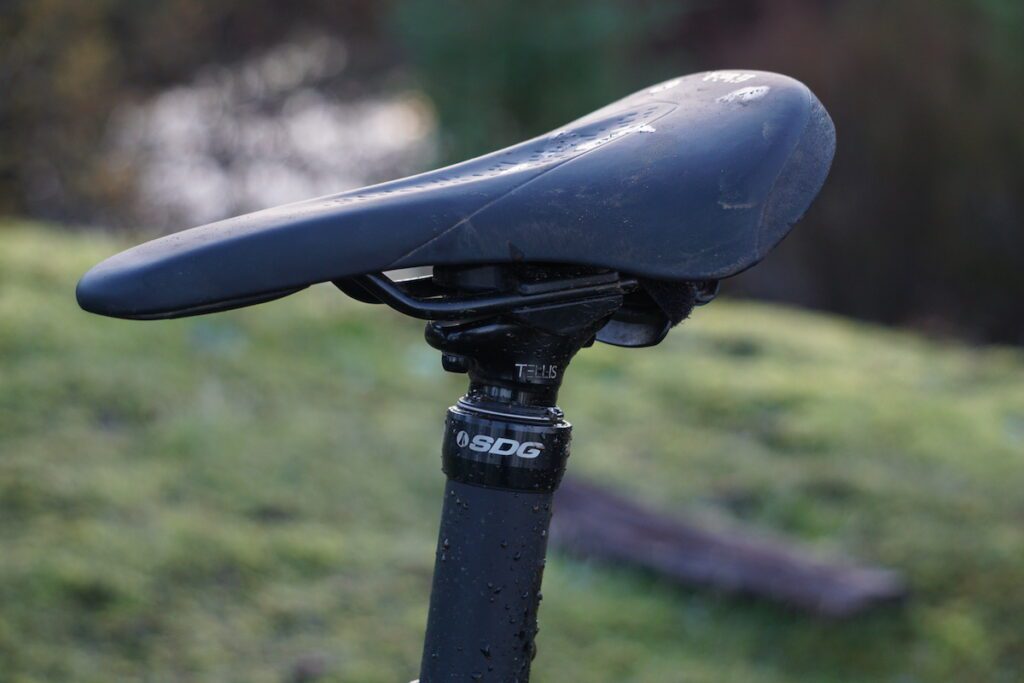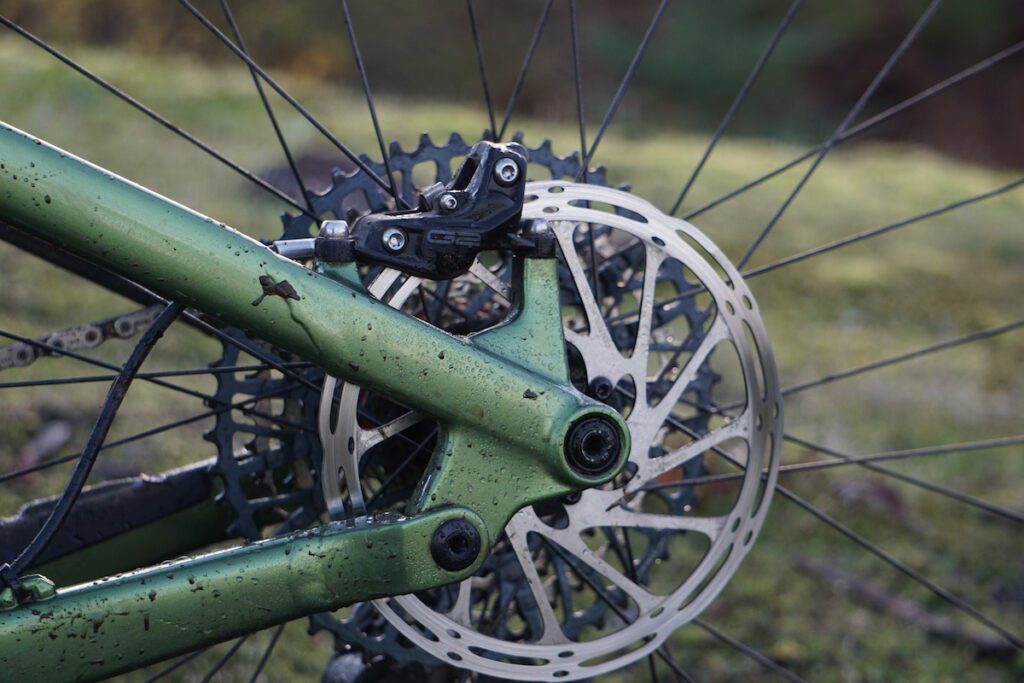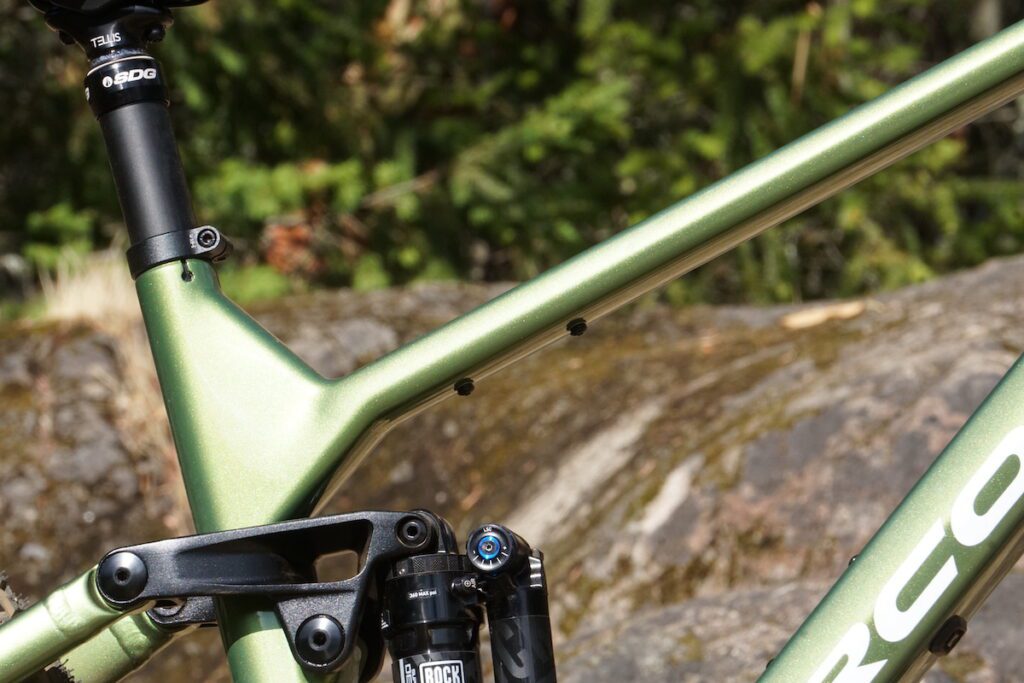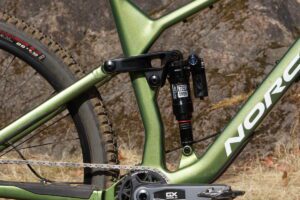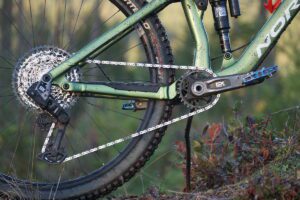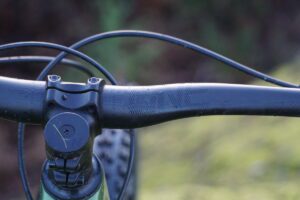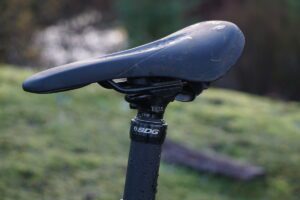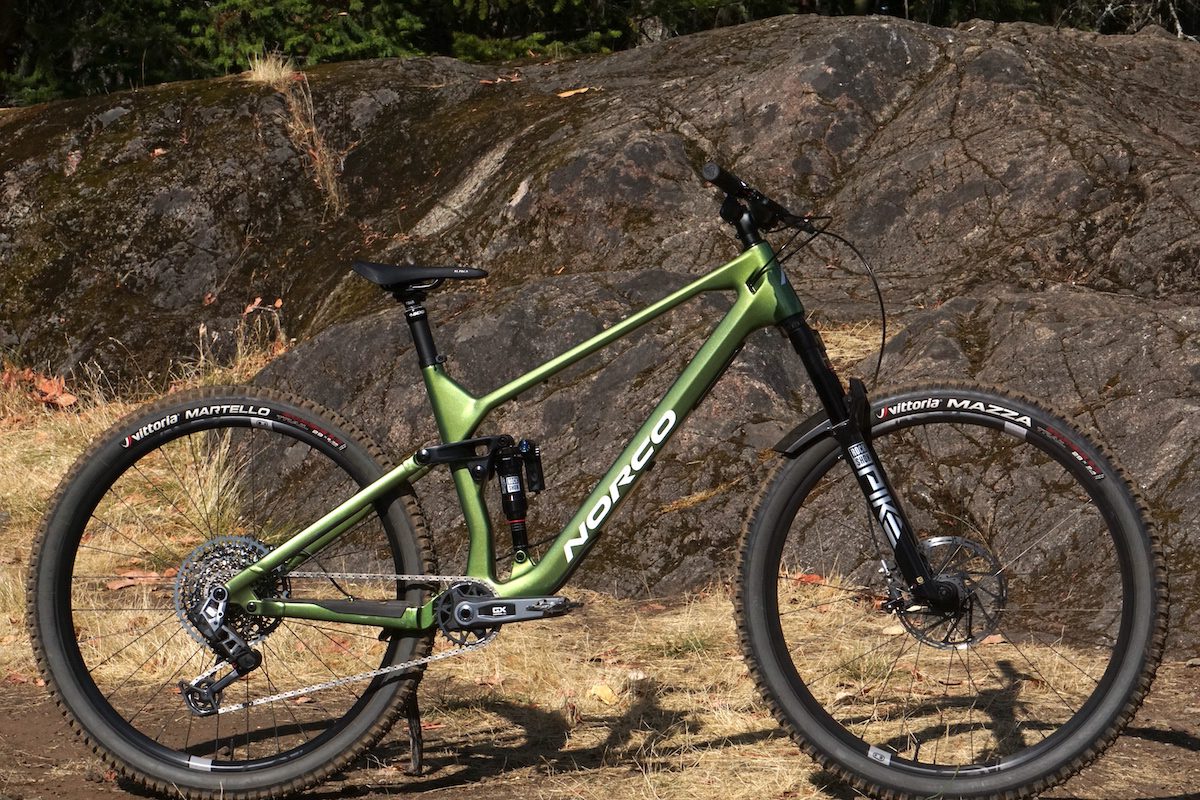Long-term review: Norco Fluid FS C1
A versatile trail successor to the alloy model, but with a few quirks
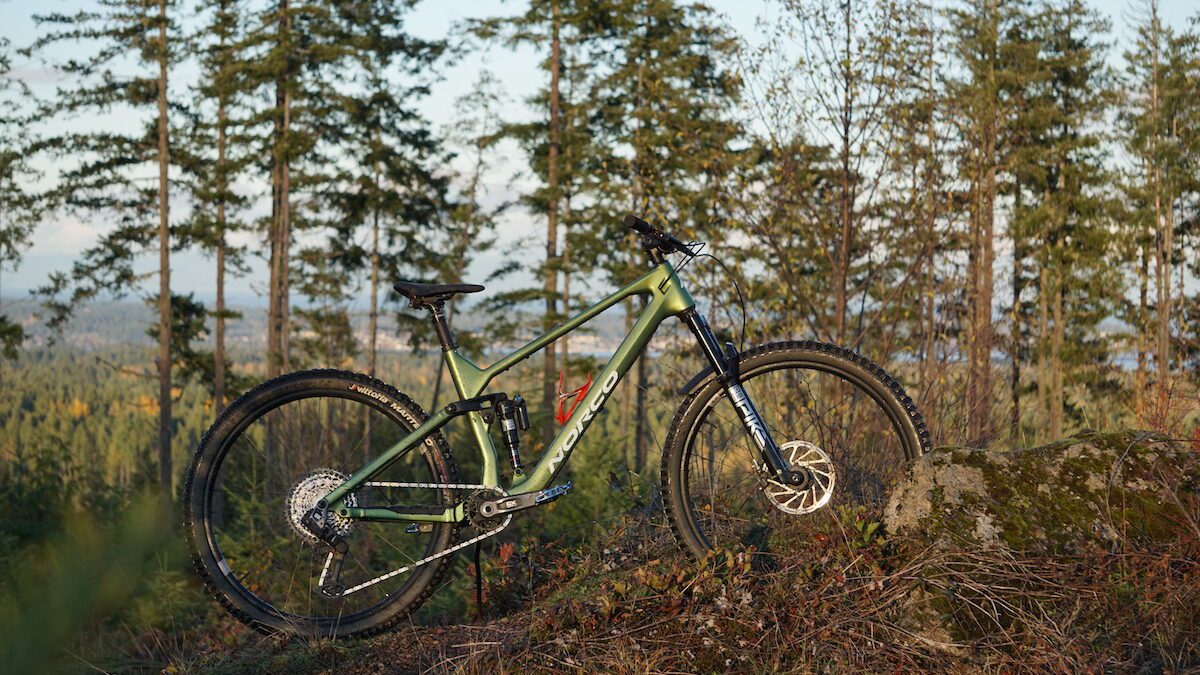
When Norco took the unusual step of launching the Fluid FS in aluminum first, it earned much critical acclaim. It wasn’t hard to see why, either. The alloy bike was comparatively affordable but still had features like size-specific geometry that are typically reserved for pricier bikes. We had a blast on our alloy test bike and, when Norco inevitably announced the carbon fiber version was on its way, we we’re stoked to try it out, too.
But is carbon fibre automatically better? After spending months on both bikes, it’s an interesting question. Does the difference in performance balance out the added cost? Ultimately, the Fluid FS C1 is a great bike, but with some interesting traits. Dive into all the details below.
The bike: Norco Fluid FS C1
Before we get into whether or not the fancier frame material is better, lets look at what all has changed. First, it is only the front triangle that gets an upgrade. The chainstays and seat stays are still alloy. But the change the the front triangle alone helps Norco shave off a full 600 grams from the frame weight. It’s also 150g lighter than the existing Optic frame. Norco also tidies up some frame details, like cable routing and adding a bash guard, as well as upgrading to bearing mounts on the upper shock mount.
Beyond those changes, this is the same 130mm/140mm travel 29-er as the alloy bike. There’s still size-specific seat angles and chainstay lengths. There’s still clearance for long-travel 34.9mm dropper posts in all sizes, and there’s still support from Norco’s Ride Aligned set-up guide.
The price is, of course, also different. Whereas the alloy range tops out at $5,000, the Fluid FS C1 is $8,000. That is not a small difference, but it’s not just the frame that changes. The C1 includes RockShox Ultimate-level suspension (Pike fork, Super Deluxe shock), Crank Bro’s. Synthesis Enduro alloy wheelset, SRAM G2 RSC brakes, a carbon fiber bar from One Up Components and, of course, SRAM GX T-Type wireless shifting. There’s some significant parts upgrades over the A1 model in there that contribute to that price increase.
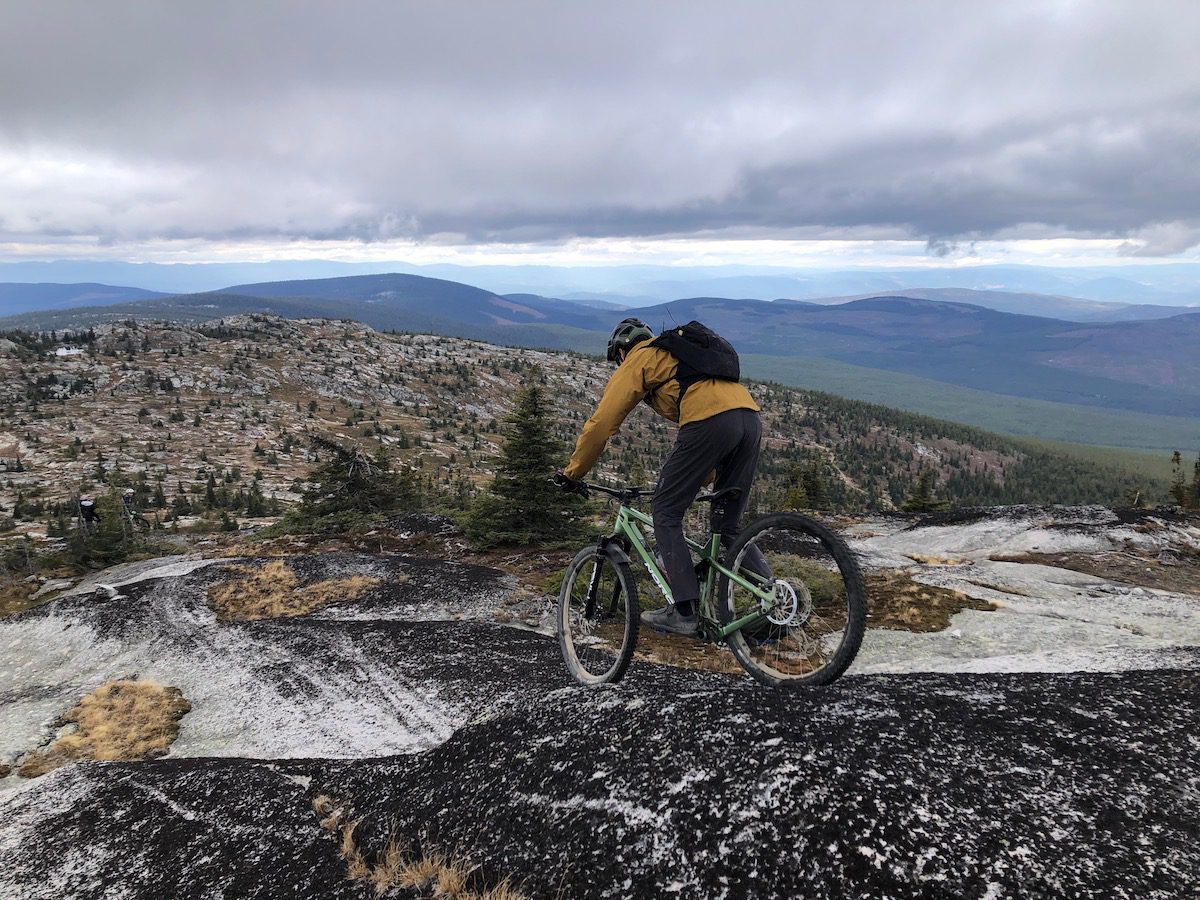
The ride: Fluid FS Carbon in the wild
While our first impressions of the Fluid FS Carbon were positive, really settling into the bike took a little longer. The improvement that come with moving to a lighter bike and resulting ease of acceleration was immediately positive. As was the snappy feel pushing into smooth, fast corners. Buoyed by those good vibes, we set out to see what the FS C1 was capable of. And before things got good again, they got a little weird.
Like the Optic, Norco designs the Fluid to be capable on trails you might otherwise think twice about hitting on a 130/140mm travel bike. The Optic always did so with a balance of support and suppleness. With the Fluid Carbon, that balance wasn’t as easy to find. It did get there, but it took some tweaking before it felt settled on a wide range of terrain. At first, it felt like it would either bounce on landings and deflect off impacts or, if I tried to adjust for that, blow through the limited travel too fast.
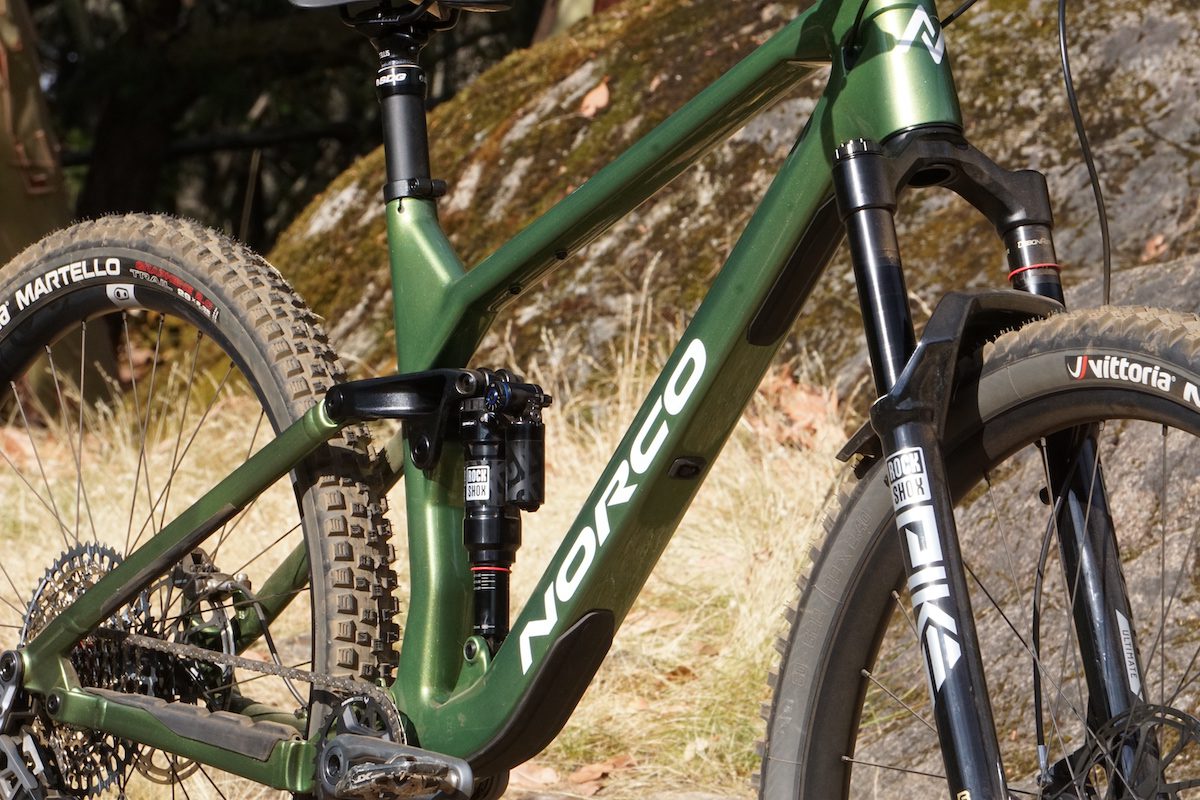
Norco’s asking a lot of a mid-travel bike. That makes hitting the balance hard, especially specing it with a mix of lighter parts (a Pike instead of a Lyric) and more durable equipment (800mm OneUp Carbon bars are great for vibration dampening but stiff enough for DH, Crank Bro.’s Synthesis Alloy wheels, tough Vittoria tires). On the Fluid Alloy, the frame material helps balance out the rigidity of those parts. On the Fluid Carbon, it adds to the overall strength making for a bike with very little flex.
Switching to a more forgiving wheelset made an immediate and positive difference in how the Fluid handled. It settled the bike much more, making it more predictable and easier to ride hard. That may not be necessary if you’re riding somewhere where fast and smooth trails are the name of the game, or if you’re stronger than I am, but I found the Fluid Carbon much calmer and easier to push hard on chattery, rough trails with the change.
Light trail versus light trail
Norco is playing in a micro-niche where bikes can have very different purposes. The aim of a short travel trail bike is always to excel on the widest range of trails possible, but the approach to that goal, or what it means to excel, can vary wildly. Like the Optic, the Fluid Carbon is impressively capable on larger features and steeper trails, though it does demand more finesse and more attention than when hitting the same trails on a bigger bike. It’s also not built up as bury as, say, Canyon’s Spectral 125. But the counter point to those limitations is that the Fluid Carbon is more engaging on less demanding terrain than either the Optic or 125. And, due to its significantly lighter weight and stiffer frame, it’s more fun on rolling terrain than the Fluid Alloy.
Over the months of riding the Fluid, it hit almost every kind of trail and followed me on a week-long trip from the B.C. coast to Alberta. It was a week of riding everything Fromm easy XC, fast flow trails and a six-hour sub-alpine epic to rocky tech, jumps and one of the steeper trails I’ve put tires to. The Fluid FS Carbon might not have been the perfect bike every day, but it was a really amazing option for riding in very different areas every day.
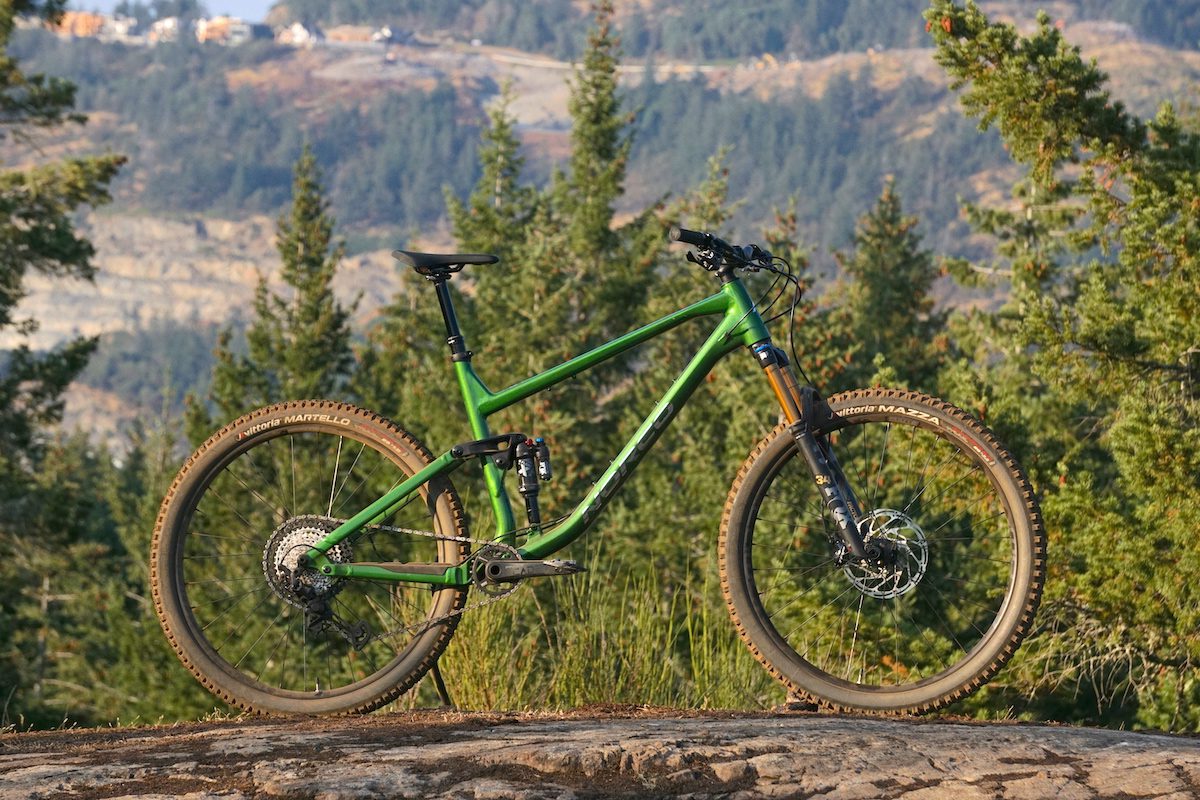
Comparative review: Fluid FS C1 vs. Fluid FS A1?
The Fluid FS Alloy earned high praise for its mix of performance and price-point. Adding the carbon fibre front triangle shifts that balancing point somewhat, adding $3,000 to the cost of the top-end model but also adding efficiency and shedding grams.
That all makes a difference on the trail. The Alloy model is more forgiving and was a bit easier to feel at home on. But it definitely felt less punchy any time the trail pointed uphill. On rolling terrain, that can start to kill momentum, flow and fun. The Fluid FS C1 really carries speed up short grade-changes well. And, for riders looking for a more rigid chassis, is more responsive pushing through corners and pumping for speed.
For some riders, the added cost of the frame (and parts) upgrade will absolutely be worth it for that shift in performance. Especially when you move down the line (and ditch wireless Transmission) for the C2 model. The whole Fluid FS Carbon line still does a good job of balancing performance with price, though, even if the absolute cost is higher than the alloy line.
Final words: Fluid FS C1 review
After a really positive first impression, it took a little while to settle into the Fluid Carbon. But, when I did find the bikes full potential (or at least, its full potential for my abilities) it excelled in an impressively wide range of conditions. That makes the Fluid FS C1 great for riders looking for a balanced bike for big days, having fun on flowing trail or pushing yourself on more demanding trails. Or to have fun doing all of that, without having to buy a quiver of bikes.
The Fluid Alloy was impressive. The Fluid Carbon elevates that to a more efficient, snappier package. It does so without losing the reasonable price point that drew so much attention to the alloy model, too.
Norco offers the Fluid FS C1 for $8,000.
